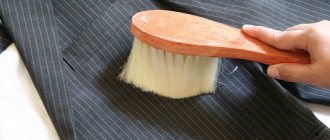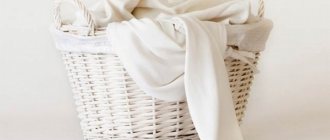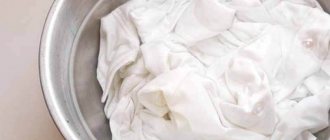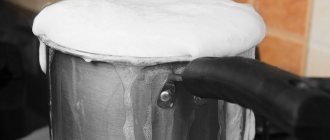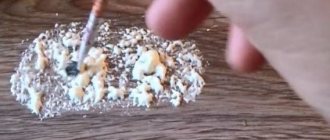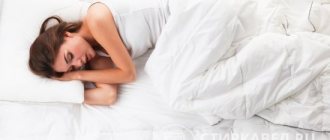Cooking is not exactly a “clean” activity. Every time you open a bag of chicken breast, you're inviting bacteria into your kitchen, and a new study shows that people aren't very good at eliminating those germs when they cook.
The only place in your kitchen that gets dirtier over time is your tea towels.
The USDA funded a study in which 123 people were videotaped preparing a dinner of meat and fruit salad. Not only were 90% of these salads contaminated during the preparation process, but dish towels were the most contaminated place participants touched.
The video showed participants frequently touching the towel before washing their hands, potentially spreading bacteria (via raw meat) to the fabric. Then, even if their hands are properly washed, they touch the towel and contaminate their hands again.
Just like the hand towels in your bathroom, you should replace your dish towels daily, or at least on the days you were cooking (bacteria on towels can grow overnight). Plus, leading scientific experts recommend using paper towels to mop up excess water and dry your hands while preparing food to minimize the spread of bacteria.
Why do you boil laundry?
The reasons for boiling laundry have not changed, despite the fact that the technique has been used for several centuries. Boiling is an ideal way to whiten laundry and rid it of stains, germs and insects.
It is especially popular with young parents who do not trust machine washing. This function is available in many modern washing machines, so many have already forgotten about boiling.
Terms of use
The rules for using kitchen towels are simple and allow you to avoid the painful washing of stains. To reduce difficult-to-remove contaminants, it is recommended:
- have separate copies for hands and utensils;
- do not wipe work surfaces with a towel;
- do not use as potholders;
- wash your hands thoroughly and only then dry them;
- change towels more often;
- Clean towels must be ironed: this way the fabric gets less dirty.
Kitchen surfaces should be wiped with an absorbent wipe. To blot up dirt on the table, it’s better to take a paper towel.
Terry products are not suitable for use in the kitchen. Fat is firmly ingrained into numerous fibers, and persistent colored stains are extremely difficult to remove. In addition, fluffy products take a long time to dry, which leads to the growth of bacteria and mold in the fabric fibers. Linen products or cotton waffle fabrics are suitable for use in the kitchen.
A few rules about boiling
The most important thing in boiling is choosing the right utensils. Many may have noticed how in old films housewives took huge pots and stirred laundry in it. An enamel pan is ideal for these purposes; it will not oxidize when exposed to high temperatures or when additional substances are added.
Aluminum and buckets are not used; on the contrary, the laundry will come out yellow.
Boiling also has a nuance, for example, for one kilogram of clothes or linen, there are about 10 liters of hot water. The dishes should be deep, because as the temperature rises, the water will begin to boil and overflow the banks. Use a clean wooden spoon to stir.
Washing, soaking, bleaching and boiling kitchen towels with laundry soap: recipe
Boiling is a very “old” but effective way to dissolve and remove greasy stains on white and colored kitchen towels. During boiling, greasy stains dissolve under the influence of high temperatures, and soap destroys fat, corroding it. You can use both a regular bar of laundry soap and modern liquid laundry soap.
INTERESTING: This type of soap is considered universal, as it is ideal for any household purposes, cleaning and washing.
"Manual" method:
- Dirty towels should be thoroughly wetted (with any water)
- Take a bar of soap and scrub all dirty areas (or the entire towel) well.
- Such a “soaped” towel should be placed in polyethylene or any bag, tightly twisted and tied.
- The towel should be kept in this state for several hours (or all night).
- In the morning, they should be washed by hand or by machine at high or medium temperatures (for colored ones).
IMPORTANT: Any boiling should be done only for light and white towels, bright and dark ones will lose their color.
Boiling method:
- For this method, you need to choose the right container, for example, an enamel basin or a bucket.
- Place a bar of soap in it (or pour a bottle), completely dissolve and bring the liquid to a boil.
- To ensure that the soap dissolves quickly, it is better to rub it with a grater.
- The liquid in the dish should be cloudy and even a little thick.
- All contaminated towels should be dipped into the liquid and, turning the heat to moderate (the water should not boil), cook them for about half an hour.
- Do not rush to remove the towels; let them sit in the liquid until they cool down.
- After this, you can do a regular or machine wash.
Laundry soap for towels
Instructions for boiling laundry (step by step)
Most often, housewives target bed linen, diapers, rags and children's clothing. Naturally, everything must be washed separately. Here are step-by-step instructions on how to clean your laundry from pests and germs, making it soft and fresh.
Step 1: solution
This method allows you to avoid expensive products in the form of Vanish and powder enhancers. To boil, just grate laundry soap or add soda to boiling water. The standard cooking mixture includes: 1/2 bar of soap per 10 liters of water. Alternative way: add a cup of soda per 10 liters.
Step 2: Boil
First, the solution is diluted in warm water, then it is brought to boiling water. When all the ingredients have dissolved, reduce the heat.
Step 3: prepare the laundry
It is better not to wash colored items in this way; they will lose their beauty and print. Therefore, it is only suitable for white diapers and plain bedding. Things must first be shaken to rid them of excess dust and small debris (sand, wool, etc.). Next, it is placed in hot water with a solution.
Step 4: How long to wash
The duration of the process depends on the degree of soiling of the laundry. Children's bedding is usually boiled for about an hour, very dirty adult bedding - about 2 hours. You definitely need to reduce the heat; although cotton and linen fibers are strong, overloading can cause the fabric to simply shrink.
Step 5: Finish Boiling
If the laundry returns to normal, becomes white and clean, it is left in the water until it cools completely. Next, move it into a basin, fill it with cold water and begin rinsing. After this, you can hang it outside, the UV rays will make the laundry even fresher and whiter.
Washing, soaking, bleaching and boiling kitchen towels using mustard: recipe
Surprisingly, regular mustard powder is an excellent solution for washing dirty kitchen towels. Mustard is effective in that it can not only “remove” stains, but also whiten and disinfect fabrics. You can do several types of washing with it:
- Soak
- Boiling
- Hand wash
INTERESTING: You can buy mustard powder at any grocery store or supermarket.
What you will need:
- Mustard powder – 50 g bag.
- Boiling water – 0.5 buckets (in which you will boil)
What to do:
- Bring the water to 3-40 degrees
- Dissolve mustard in a bucket
- Dip towels
- Keep them in a bucket until cool (this will be a pre-soak).
- Towels should be soaked for as long as the contamination requires (lightly soiled ones will take less than an hour, heavily soiled ones will take about 3-4 hours).
- It will be useful to boil those towels that have greasy stains. To do this, place the dishes on the fire and “cook” for about half an hour.
- Then do a standard machine wash or hand wash.
IMPORTANT: For a more gentle wash, you can use the mustard powder rubbing method. To do this, dry mustard is diluted with water into a paste and all dirty places on wet towels are coated with it. After that, the towel needs to be twisted and folded, hidden in a bag, and kept for a day.
Effective washing with mustard
Is it possible to boil colored laundry?
Colored things were worn at all times, even when washing machines had not yet been invented. However, how did people manage to preserve the color if they also boiled it to purify it?
Everything is very simple, for each wash we used different solutions and boiling techniques, which helped preserve the appearance of clothes and bed linen.
Preparation
Here you also need to pay attention to the solution and the state of things. First you need to make a special composition for boiling. It includes:
- 2 tbsp ammonia.
- 30 g soda.
- 30 g of laundry soap, it must be grated on a fine grater.
Take a 10 liter saucepan, put it on the fire with water, bring it to a boil. Next, you need to add all the ingredients and stir well.
Boiling
After the composition becomes one with water, it is necessary to place the laundry. It is first shaken out and removed from small debris. Next, the fire is reduced to a minimum, the windows are opened, and the kitchen itself must be closed.
Boiling colored laundry takes no more than an hour. Dangerous vapors that will come out of the alcohol must go out the window.
Wash
After an hour has passed, the fire must be turned off. Next, the laundry cools in water under natural conditions. After this, it is placed in cold water and rinsing begins. You need to hang it on a balcony or in an open space where there is no direct sunlight.
This will help maintain good color and also give the laundry a fresh look. There is no need to worry that your laundry will smell of alcohol or soda; this smell will disappear. Laundry soap is neutral and does not have an unpleasant odor.
If you don’t trust soap and soda, you can use regular baby powder as an alternative. It is also dissolved in boiling water.
Getting rid of stains of various origins
While a towel that has been used several times and looks clean in appearance can simply be washed in a machine, fabric with stains must be washed using various products. In addition to chemical stain removers, there are folk remedies that also work well with various types of stains.
Salt. Used to remove coffee stains. You need to make a solution at the rate of 5 tbsp. l. salt per 5 liters of water. Then soak for 1 hour and wash as usual.- Shampoo. Works great on fruit stains. You need to pour it on the stain and wait until it starts to disappear, then wash it.
- Ammonia and glycerin. Removes tea and coffee stains. To do this, mix ammonia and glycerin in a ratio of 1:4, add to water and soak for 1 hour. Then wash.
- Silicate glue. It can be used to remove various stains, but only on white fabric. Grate a bar of soap and add 1 tbsp. l. silicate glue. Boil towels in this solution for 30 minutes.
- Dishwashing liquid. It gets rid of greasy stains. Apply the product to the stain, wait a while and wash.
- Lemon acid. Removes stains from beets and tomatoes. First, wash with laundry soap, then sprinkle citric acid on the stain and leave for 5 minutes. Then just rinse.
How to wash kitchen towels
This is usually the dirtiest thing you have in the house. Kitchen towels are a breeding ground for bacteria, grease and other nasty elements. They usually look very tired, but they are made from natural materials - cotton or linen. You can clean them and bring them back to normal using regular boiling.
How to do it correctly:
- First you need to prepare a solution based on grated laundry soap.
- A 10 liter pan will take a whole piece.
- Next, towels are placed in boiling water so that they are completely immersed in water.
- If they are white, then after the water boils, you need to add another 2 tbsp of dry bleach.
- To give them a pleasant smell that will definitely overcome the odor of food and fat, you can add a glass of any washing powder.
Boil towels for about 20-30 minutes. Next, the pan is turned off, the towels cool in the water. Afterwards they can be placed in the washing machine for rinsing and hung on the balcony. This method is also suitable for washing bath towels.
Removing old greasy stains
When cleaning things from old grease stains, it is recommended to use laundry soap. You can also use vinegar and dish soap.
They work well against old grease stains:
- soda,
- peroxide,
- ammonia,
- starch.
You can read more about removing old grease stains from kitchen towels here.
Photo instructions on how to boil laundry
Useful tips
- For some kitchen operations, towel replacements are quite suitable. With this simple word we designate useful assistants for any housewife - these are various sponges, rags, and potholders. Use them at least occasionally and cotton textile fabrics will last you much longer.
- Don't forget to change towels often. This way, you will avoid the appearance of old stains, which are much more difficult to deal with. Agree, it is much easier to prevent a problem than to look for solutions.
- Use an iron. If dried, washed towels are ironed on both sides, this will promote additional disinfection (which is very important now).
Following these simple tips will significantly extend the life of your items. We hope that the information in the article was useful to you. If this is indeed the case, then we will be infinitely glad if you share a link to it by clicking on the appropriate social network button below and leaving a rating.
Shining kitchen
So that you don’t have to constantly think about how to wash kitchen towels (no matter what products you use - household chemicals or folk recipes), you need to follow simple tips for choosing and caring for kitchen textiles:
- The best option for the kitchen is waffle and paper towels; bacteria and mold penetrate deeply into terry products and take longer to dry.
- For normal use of kitchen textiles, there should be 2-4 sets of towels per shift, depending on the frequency of food preparation.
- To avoid staining towels with hot grease, which is difficult to remove, you need to use oven mitts.
- If you have to prepare a large amount of food, you need to have disposable towels or napkins on hand.
Paper towels should be in every kitchen
- To prevent unpleasant odors from becoming absorbed into textiles, it is recommended to soak fresh soiled towels with detergent.
- You definitely need to iron your towels. Then the material repels fat better.
The more often you change kitchen textiles, the easier it is to remove stains and dirt. By following simple recommendations for caring for household items, you can make your kitchen snow-white, sparkling clean and cozy, with beautiful, neat towels.
